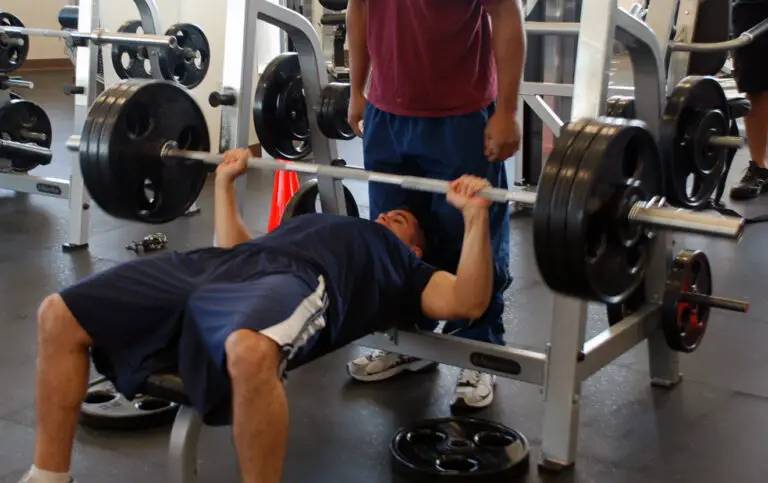Bulk or cut? decide which fitness phase you should be in
Key takeaways
- Bulking is when you enter a caloric surplus (eating more than you are burning) whereas cutting is when you enter a caloric deficit (eating less than you are burning). Bulking usually aligns with the goal of building muscle mass while cutting usually aligns with creating a leaner body.
- It is important to consider your current body composition, fitness goals, lifestyle and habits when deciding wether to bulk or cut. Make sure to also consider the risks and challenges that come with each one.
- Remember that both bulking and cutting are part of a cyclical process. It is important to choose whether bulking or cutting is appropriate for you currently. At some point you will transition into the other phase. When transitioning, it is important to find the balance so that the change isn’t abrupt.
Bulk or cut?
The decision to bulk or cut is a critical one in any fitness journey. Whether your goal is to build muscle, shed fat, or strike the perfect balance between strength and aesthetics, knowing which phase to pursue is essential. This article will explore the key considerations that can help you determine whether to focus on bulking or cutting based on your goals, body composition, and lifestyle.
Understanding the concepts of bulking and cutting
Bulking refers to a phase where the primary goal is to build muscle mass. It involves consuming more calories than you burn (a caloric surplus) to fuel muscle growth while accepting some inevitable fat gain. During this phase, strength and performance improvements are also emphasized. Cutting, on the other hand, focuses on fat loss while preserving as much muscle mass as possible. It requires a caloric deficit, meaning you consume fewer calories than your body needs to maintain its weight. The goal is to create a leaner, more defined physique. Both phases play an essential role in body composition changes, but choosing which to pursue depends on various factors.
Assessing your current body composition
A critical first step in deciding between bulking and cutting is evaluating your current body composition. Knowing your body fat percentage can provide a clearer picture of whether you should focus on gaining muscle or losing fat. If your body fat is above 20–25% (for men) or 30–35% (for women), cutting may be the better choice. Lowering body fat first allows for a leaner starting point when transitioning to a bulk, ensuring the added weight is primarily muscle. If you’re already lean (10–15% for men, 18–25% for women), bulking is likely the more effective phase. With a leaner physique, your body is primed for muscle growth with less risk of excessive fat gain.
Body composition can be assessed using tools such as body fat calipers, DEXA scans, or bioelectrical impedance devices, though even a visual assessment can provide some guidance.
Consider your fitness goals
Your fitness goals are a significant determinant of whether you should bulk or cut. If your primary aim is to build muscle or improve strength, a bulking phase is essential. Building muscle requires a caloric surplus to provide the energy and nutrients needed for hypertrophy (muscle growth). If you’re more focused on revealing muscle definition or preparing for an event where aesthetics matter, cutting is the way to go. During this phase, prioritizing protein intake and resistance training will help maintain muscle mass while reducing fat. For performance-oriented athletes, the choice depends on the demands of your sport. Bulking may improve strength and power, while cutting could enhance speed, agility, or endurance by reducing excess body weight.
Evaluate your lifestyle and habits
Lifestyle factors can also influence your decision to bulk or cut. Bulking often requires consuming larger quantities of food, which can be challenging to sustain for individuals with busy schedules or limited meal-prepping habits. Cutting, on the other hand, requires careful tracking of caloric intake, which may also demand consistency and planning. For socials, if an upcoming event or seasonal preferences align with a leaner look (e.g., summer vacations), a cutting phase might be preferable. Alternatively, colder months or a less social season may provide a better opportunity to bulk. The availability of gym equipment and your workout environment can also play a role. If you lack access to heavy weights or advanced resistance equipment, focusing on cutting may be more practical until you can adequately stimulate muscle growth during a bulk.
Understand the risks and challenges
Each phase has its own set of challenges that require thoughtful consideration. The primary downside of bulking is the inevitable fat gain that accompanies muscle growth. For some, this can lead to discomfort or dissatisfaction with their appearance. Additionally, over-consuming calories without proper exercise can lead to excessive fat accumulation rather than lean muscle gains. Cutting requires creating a caloric deficit, which can lead to reduced energy levels and potential loss of muscle mass if not managed correctly. Prolonged cutting phases may also impact recovery, mood, and overall workout performance. Understanding these risks and preparing strategies to mitigate them—such as prioritizing protein intake and following a structured training plan—can help you succeed in either phase.
Transitioning between phases
The transition from bulking to cutting (or vice versa) should be gradual to ensure optimal results. Abrupt changes in caloric intake can lead to muscle loss or fat gain. Aim to adjust calories incrementally over several weeks to ease into the next phase. During transitions, maintaining strength training is crucial to preserve muscle mass. Monitoring your progress and adjusting based on feedback from your body will also help you optimize the shift between phases.
Finding the right balance
For those uncertain about fully committing to a bulk or cut, a body recomposition approach might be an alternative. Body recomposition involves simultaneously building muscle and losing fat, typically achieved by maintaining a slight caloric deficit while prioritizing protein intake and resistance training. Some recomp hacks include implementing high-intensity interval training (HIIT) and prioritizing recovery and sleep.
While progress in both areas may be slower, this method allows for gradual improvements in body composition without the need for distinct bulking or cutting phases.
The big picture: it’s a cycle
Deciding whether to bulk or cut depends on your starting point, fitness goals, and lifestyle. Bulking is ideal for individuals looking to build muscle and improve strength, while cutting is better suited for those aiming to reduce body fat and enhance muscle definition. Evaluate your body composition, set realistic goals, and create a plan that aligns with your daily habits and long-term aspirations. Remember that both phases are part of a cyclical process and success comes from committing to each phase fully when the time is right.
Written with the assistance of AI. Reviewed and edited by Marielle Livelo.







